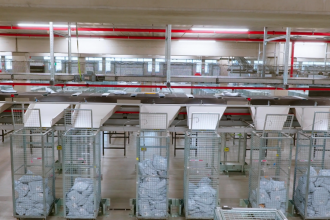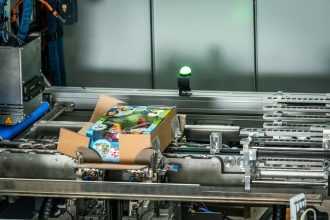Sustainability in the Warehouse—Part 1

Few companies are ignoring sustainability these days, for many reasons. The first, and most obvious, is that it’s the responsible thing to do. But it’s also good business—stakeholders increasingly want to know how the companies they support are approaching sustainability. ESG—environmental, social and governance—is increasingly a pillar of how companies operate.
If you’re looking to make an impact with a sustainability effort, the warehouse is a good place to focus. From forklift emissions to lighting, packaging, and everything in between, there are numerous opportunities to improve your footprint in the warehouse. What’s more, you can integrate your partners into the efforts as a way to maximize your impact.
When you’re implementing sustainability efforts in the warehouse, you’ll want to optimize your resources and increase efficiencies, reduce waste, make the most of your circular economy, and more. While the pros far outweigh the cons, establishing a sustainability program in the warehouse can be costly to implement. But over time, those upfront costs are more than realized when you begin to save money from your increased efficiencies; cheaper utility bills, for instance, is a good example.
To understand the areas where you can make improvements, know that most sustainability efforts fall into two buckets: Scope 1 and Scope 2 emissions, as defined by the Environmental Protection Agency (EPA).
Scope 1 is defined as direct greenhouse emissions that occur from sources controlled by/owned by an organization. Scope 2 emissions, on the other hand, represent indirect greenhouse emissions that go along with the purchase of products like heating and cooling systems, utilities, and the like. These would be your energy uses, and the way you involve Scope 2 reduction efforts is to be a careful consumer of the products that produce emissions within your warehouse.
When you take a look around the interior of your warehouse, you’ll need to audit both your Scope 1 and Scope 2 emissions output. Lighting is one good place where you can make a difference. Switching over to LED bulbs is a good way to lower your energy consumption and heat generation. They last longer than other forms of lighting, too, which can lead to long-term cost savings. To take your lighting impact a step farther, consider motion-sensing lights, which will turn off whenever someone isn’t in a zone of the building.
Other changes you can make to reduce emissions include your environmental temperature controls. If you house refrigerated goods, for instance, how are the curtains surrounding the entrance to that area? If they’re old, consider upgrading to newer, more robust models.
You should also take a good look at your forklifts and their power sources. Swapping out traditional lead acid batteries for today’s more efficient lithium-ion batteries. This change can amount to substantial energy savings. Li-ion batteries produce fewer emissions to begin with, and they also require far less charging time. They increase your uptime and have longer life cycles.
These are all good starting places for warehouse sustainability. In part two of this blog post series, we’ll address even more areas for change.
For more information about the Solutions Community: mhi.org/solutions-community
For further articles from the Solutions Community:
How to Use Software to Attract and Retain Talent
Digitization of Intralogistics: Software
Forward Pick Area—Design and Operations
Maintenance Check: From Reactive to Predictive
Digitization of Intralogistics—Replenishment



